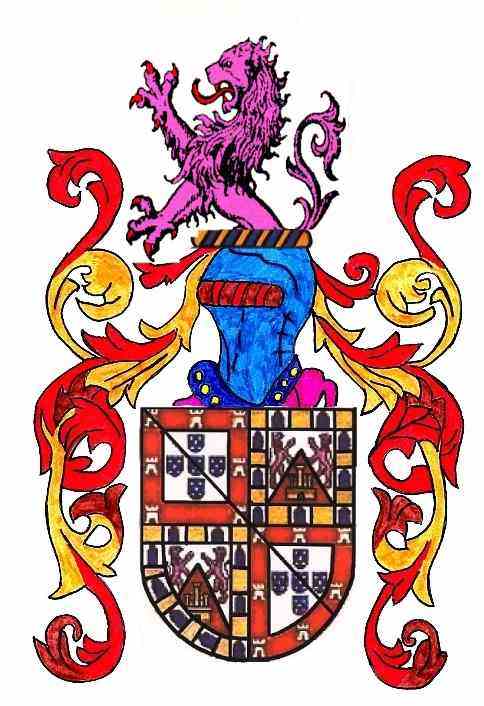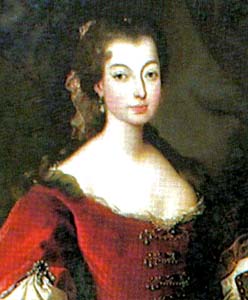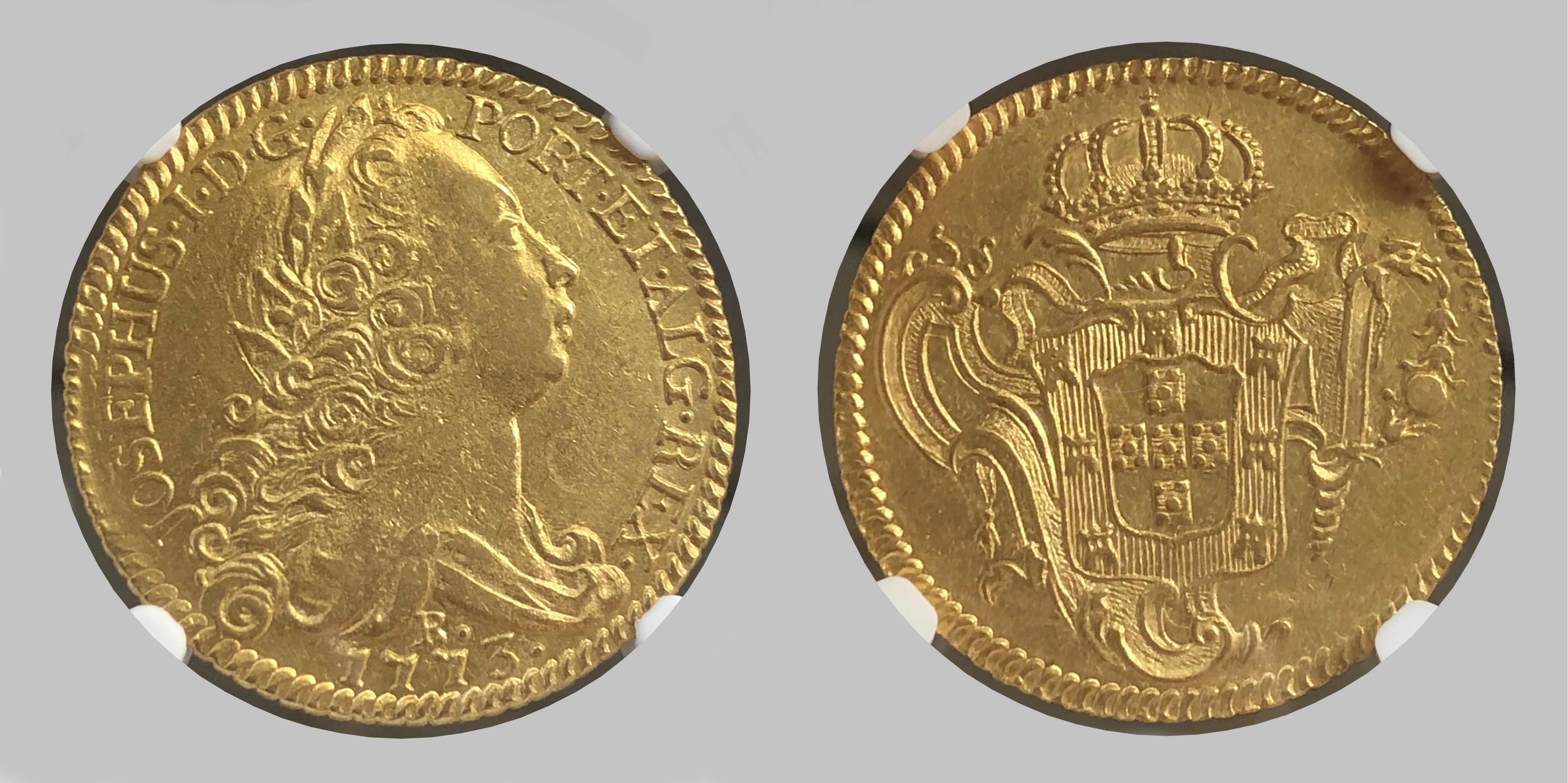|
Maria I
Dom (title), Dona Maria I (17 December 1734 – 20 March 1816) was Queen of Portugal from 24 February 1777 until her death in 1816. Known as Maria the Pious in Portugal and Maria the Mad in Brazil, she was the first undisputed queen regnant of Portugal and the first monarch of Brazil. Maria was the eldest daughter of King Dom José I (Joseph I) of Portugal and Infanta Doña Mariana Victoria of Spain. As the heir to the throne, she held the titles of Princess of Brazil and Duchess of Braganza. She married her uncle Infante Dom Peter III of Portugal, Pedro (Peter) in 1760. They had six children, of whom three survived infancy: Dom José, Prince of Brazil, José (Joseph), Prince of Brazil; King Dom João VI (John VI) of Portugal; and Infanta Mariana Vitória. The death of King José in 1777 placed Maria, then 42 years old, on the throne. Her husband Pedro was nominally king jure uxoris, alongside her as Dom Pedro III. Upon ascending the throne, Maria dismissed her father's powerful c ... [...More Info...] [...Related Items...] OR: [Wikipedia] [Google] [Baidu] |
House Of Braganza
The Most Serene House of Braganza ( pt, Sereníssima Casa de Bragança), also known as the Brigantine Dynasty (''Dinastia Brigantina''), is a dynasty of emperors, kings, princes, and dukes of Portuguese origin which reigned in Europe and the Americas. The house was founded by Afonso I, 1st Duke of Braganza, illegitimate son of King John I of Portugal of the House of Aviz, and would eventually grow into one of the wealthiest and most powerful noble houses of Iberia during the Renaissance period. The Braganzas came to rule the Kingdom of Portugal and the Algarves after successfully deposing the Philippine Dynasty in the Restoration War, resulting in the Duke of Braganza becoming King John IV of Portugal, in 1640. The Braganzas ruled Portugal and the Portuguese Empire from 1640 and with the creation of the United Kingdom of Portugal, Brazil and the Algarves, in 1815, and the subsequent independence of the Empire of Brazil, in 1822, the Braganzas came to rule as the monarchs o ... [...More Info...] [...Related Items...] OR: [Wikipedia] [Google] [Baidu] |
Queen Of Portugal
This is a list of Portuguese monarchs who ruled from the establishment of the Kingdom of Portugal, in 1139, to the deposition of the Portuguese monarchy and creation of the Portuguese Republic with the 5 October 1910 revolution. Through the nearly 800 years in which Portugal was a monarchy, the kings held various other titles and pretensions. Two kings of Portugal, Ferdinand I and Afonso V, also claimed the crown of Castile. When the House of Habsburg came into power, the kings of Spain, Naples, and Sicily also became kings of Portugal. The House of Braganza brought numerous titles to the Portuguese Crown, including King of Brazil and then ''de jure'' Emperor of Brazil. After the demise of the Portuguese monarchy, in 1910, Portugal almost restored its monarchy in a revolution known as the Monarchy of the North, though the attempted restoration only lasted a month before destruction. With Manuel II's death, the Miguelist branch of the house of Braganza became the pretenders to t ... [...More Info...] [...Related Items...] OR: [Wikipedia] [Google] [Baidu] |
Queen Regnant
A queen regnant (plural: queens regnant) is a female monarch, equivalent in rank and title to a king, who reigns ''suo jure'' (in her own right) over a realm known as a "kingdom"; as opposed to a queen consort, who is the wife of a reigning king; or a queen regent, who is the guardian of a child monarch and rules '' pro tempore'' in the child's stead, be it in sharing power or in ruling alone. She is sometimes called a woman king. A princess regnant is a female monarch who reigns ''suo jure'' over a " principality"; an empress regnant is a female monarch who reigns ''suo jure'' over an "empire". A queen regnant possesses and exercises sovereign powers, whereas a queen consort or queen regent shares her spouse's and/or child's rank and titles but does not share the sovereignty of her spouse or child. The husband of a queen regnant traditionally does not share the queen regnant's rank, title, or sovereignty. However, the concept of a king consort or prince consort is not ... [...More Info...] [...Related Items...] OR: [Wikipedia] [Google] [Baidu] |
Sebastião José De Carvalho E Melo, 1st Marquis Of Pombal
Sebastião José de Carvalho e Melo, 1st Marquis of Pombal and 1st Count of Oeiras (13 May 1699 – 8 May 1782), known as the Marquis of Pombal (''Marquês de Pombal''; ), was a Portuguese statesman and diplomat who effectively ruled the Portuguese Empire from 1750 to 1777 as chief minister to King Joseph I. A liberal reformer influenced by the Age of Enlightenment, Pombal led Portugal's recovery from the 1755 Lisbon earthquake and modernized the kingdom's administrative, economic, and ecclesiastical institutions. During his lengthy ministerial career, Pombal accumulated and exercised autocratic power. The son of a country squire and nephew of a prominent cleric, Pombal studied at the University of Coimbra before enlisting in the Portuguese Army, where he reached the rank of corporal. Pombal subsequently returned to academic life in Lisbon, but retired to his family's estates in 1733 after eloping with a nobleman's niece. In 1738, with his uncle's assistance, he secured an ap ... [...More Info...] [...Related Items...] OR: [Wikipedia] [Google] [Baidu] |
Jure Uxoris
''Jure uxoris'' (a Latin phrase meaning "by right of (his) wife"), citing . describes a title of nobility used by a man because his wife holds the office or title ''suo jure'' ("in her own right"). Similarly, the husband of an heiress could become the legal possessor of her lands. For example, married women in England and Wales were legally incapable of owning real estate until the Married Women's Property Act 1882. Kings who ruled ''jure uxoris'' were regarded as co-rulers with their wives and are not to be confused with king consort, who were merely consorts of their wives. Middle Ages During the feudal era, the husband's control over his wife's real property, including titles, was substantial. On marriage, the husband gained the right to possess his wife's land during the marriage, including any acquired after the marriage. Whilst he did not gain the formal legal title to the lands, he was able to spend the rents and profits of the land and sell his right, even if the wife pr ... [...More Info...] [...Related Items...] OR: [Wikipedia] [Google] [Baidu] |
Mariana Vitória
Mariana may refer to: Literature * ''Mariana'' (Dickens novel), a 1940 novel by Monica Dickens * ''Mariana'' (poem), a poem by Alfred Tennyson, 1st Baron Tennyson * ''Mariana'' (Vaz novel), a 1997 novel by Katherine Vaz Music *"Mariana", a song by Alberto Cortez *"Mariana", a song by Collectif Métissé *"Mariana", a song by Gibson Brothers Places *Mariana, Minas Gerais, Brazil **Roman Catholic Archdiocese of Mariana *Mariana Lake, Alberta, Canada *Mariana, Corsica **Roman Catholic Diocese of Mariana in Corsica *Mariana, Humacao, Puerto Rico, a barrio *Mariana, Naguabo, Puerto Rico, a barrio *Mariana, Spain *Mariana, Quezon City, a barangay in Metro Manila, the Philippines; better known as New Manila *Mariana Islands, a group of islands in the north-western Pacific Ocean *Mariana Trench, the deepest trench in the world's oceans *Terra Mariana, alternative name (sobriquet) of modern Estonia, a medieval HRE principality in Estonia and Latvia Zoology * ''Mariana'', a synonym f ... [...More Info...] [...Related Items...] OR: [Wikipedia] [Google] [Baidu] |
João VI
, house = Braganza , father = Peter III of Portugal , mother = Maria I of Portugal , birth_date = , birth_place = Queluz Palace, Queluz, Portugal , death_date = , death_place = Bemposta Palace, Lisbon, Portugal , burial_date = , burial_place = Pantheon of the House of Braganza , signature = Assinatura D. João VI.svg , religion = Roman Catholicism Dom John VI (Portuguese: ''João VI''; 13 May 1767 – 10 March 1826), nicknamed "the Clement", was King of the United Kingdom of Portugal, Brazil and the Algarves from 1816 to 1825. Although the United Kingdom of Portugal ceased to exist ''de facto'' beginning in 1822, he remained its monarch ''de jure'' between 1822 and 1825. After the recognition of the independence of Brazil under the Treaty of Rio de Janeiro of 1825, he continued as King of Portugal until his death in 1826. Under the same treaty, he also became titular Emperor of Brazil for life, while his son, Emperor Dom Pedro ... [...More Info...] [...Related Items...] OR: [Wikipedia] [Google] [Baidu] |
José, Prince Of Brazil
Dom José, Prince of Brazil, Duke of Braganza (; 20 August 1761 – 11 September 1788) was the heir apparent to the Kingdom of Portugal until his death in 1788, as the eldest child of Queen Dona Maria I of Portugal and King Dom Pedro III of Portugal, members of the House of Braganza. José died of smallpox at the age of 27, causing his younger and ill-prepared brother, Infante João, to become heir-apparent, Prince Regent to their mentally ill mother and eventually King. João's regency and reign would be a turbulent one, seeing the Napoleonic invasion of Portugal and the loss of the Portuguese Empire's largest and wealthiest colony, Brazil. Early life José was born at the ''Real Barraca'' where the Palace of Ajuda in Lisbon stands today. He was named after his grandfather who was the ruling King of Portugal at the time of his birth. His grandfather created him Prince of Beira, this being the first time when the title was given to a male. At the time of his birth, his ... [...More Info...] [...Related Items...] OR: [Wikipedia] [Google] [Baidu] |
Duchess Of Braganza
The title of Duchess of Braganza has existed in Portugal since the 15th century. This title designates the female head of the House of Braganza. Duchess of Braganza House of Braganza Nominal Duchess of Braganza House of Braganza See also *Princess of Portugal *Princess of Brazil *Princess Royal of Portugal *List of Portuguese consorts *List of Brazilian consorts The consorts of Brazil were the spouses of the reigning monarchs, using the titles of ''Queen of Brazil'' or ''Empress of Brazil'' from the establishment of the United Kingdom of Portugal, Brazil and the Algarves in 1815 to the abolition of the E ... References {{Portuguese royalty Braganza Lists of Portuguese people ... [...More Info...] [...Related Items...] OR: [Wikipedia] [Google] [Baidu] |
Princess Of Brazil
This is a list of Princesses of Brazil, from 1645 to 1815, both by marriage and birth. The title was preceded by the titles Princess of Portugal and succeeded by Princess Royal of Portugal. The title was created by King John IV of Portugal on 27 October 1645 in favor of his eldest son and heir Infante Teodósio, soon after Portugal had gotten rid of its Spanish rulers. During the 1645–1815, "Prince of Brazil" was always conferred on the heir apparent of the throne, who also received the title of Duke of Braganza. The title was abolished when Brazil became independent and joined the United Kingdom of Portugal. Brazil would later break from the United Kingdom and become the independent Empire of Brazil. The heirs presumptive of Brazil were known as Prince Imperial of Brazil or Princess Imperial of Brazil, with the style of Imperial Highness. Other members of the Brazilian Imperial Family were known by the title of Prince or Princess prefixed to their given names, with the ... [...More Info...] [...Related Items...] OR: [Wikipedia] [Google] [Baidu] |
José I
Dom Joseph I ( pt, José Francisco António Inácio Norberto Agostinho, ; 6 June 1714 – 24 February 1777), known as the Reformer (Portuguese: ''o Reformador''), was King of Portugal from 31 July 1750 until his death in 1777. Among other activities, Joseph was devoted to hunting and the opera. Indeed, he assembled one of the greatest collections of operatic scores in Europe. His government was controlled by Sebastião José de Carvalho e Melo, 1st Marquis of Pombal. The third child and second son of King Dom John V, Joseph became his father's heir as an infant when his older brother, Dom Pedro, Prince of Brazil, died. In 1729 he married Infanta Mariana Victoria, the eldest daughter of King Don Philip V of Spain, and Joseph's sister Infanta Barbara married Mariana Victoria's half-brother Prince Don Ferdinand (the future King Don Ferdinand VI of Spain). These marriages were known as the Exchange of the Princesses. Joseph and Mariana Victoria had four daughters. With the deat ... [...More Info...] [...Related Items...] OR: [Wikipedia] [Google] [Baidu] |
Monarch Of Brazil
The monarchs of Brazil (Portuguese: ''monarcas do Brasil'') were the imperial heads of state and hereditary rulers of Brazil from the House of Braganza that reigned from the creation of the Brazilian monarchy in 1815 as a constituent kingdom of the United Kingdom of Portugal, Brazil and the Algarves until the republican coup d'état that overthrew the Empire of Brazil in 1889.Bandeira, Moniz. ''Casa da Torre de Garcia d'Avila''. Editora Record, 2000, pp. 423–425 The coast of the territory which would become known as Brazil was first explored by Portuguese navigators on 22 April 1500. This territory was subsequently colonized by the Portuguese crown. Since the transfer of the Portuguese court to Brazil in 1808, colonial rule had de facto ended. On 16 December 1815, Prince Regent John, the future king John VI, raised Brazil to the status of a kingdom, thus making his mother, Maria I, the reigning queen, the first monarch of Brazil. The next year, 20 March 1816, John succeeded ... [...More Info...] [...Related Items...] OR: [Wikipedia] [Google] [Baidu] |


.png)
.jpg)

.png)




.png)